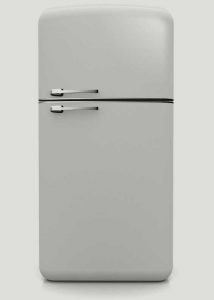Blog
Return to Blog »
Janis Kent, Architect, CASp © May, 2014; modified June, 2021 A question comes up – just how far reaching is the ADA? Most of us understand it affects buildings. A number of us understand it affects our operating policies, such as allowing a service animal into all buildings including restaurants. A more enlightened group understands it even affects access to our websites. But what about the lowly appliance we all use – the refrigerator? Does that need to be accessible and if so just what is accessible for a refrigerator? The regulations have a number of requirements concerning refrigerators. One of the most obvious is being located on an accessible route and meeting specific requirements for a clear floor space in front. The clear floor space should be parallel to the refrigerator and can be offset from its centerline as much as 24″ per ADA which is different for adaptable units under CBC. Another requirement for combination refrigerator-freezers only under ADA, is that 50% of the freezer space is to be within reach range which in this case is defined as 54″ maximum AFF. If you have a separate refrigerator or separate freezer, then this specific reach range requirement does not apply, and if the freezer is located below the refrigeratored portion it also does not apply. The operable parts or controls of the refrigerator are to be within compliant reach ranges. This would include the door handles and the thermostats. So if the controls are located within 10″ of the front of the open refrigerator then they can be 48″ maximum AFF. But if they are located deeper than 10″, the controls would need to be 46″ maximum AFF. Note that sometimes controls are placed at the back of the freezer for maintenance personnel which does not need to comply, nor is location of controls regulated for adaptable unit appliances And lastly, the door handles are to be in compliant reach range, but they are exempt from operation. In other words the handle is not required to be operable with one hand. Nor are they required to have a 5 lbs maximum operating force. And neither are they required to be operated without tight grasping, pinching, or twisting of the wrist. Now, what refrigerators does this affect? If you have a refrigerator located in an employee lounge in all likelihood it needs to be accessible particularly if this refrigerator is installed after March 15, 2012. If you have public multi-family housing built, operated, by or on behalf of a public entity then the mobility unit refrigerators are required to meet this criteria and if there are any common-use spaces supporting the mobility units, the refrigerators located in these spaces, if they exist, also are required to meet this criteria. Transient lodging mobility guest rooms and the supporting common-use spaces need accessible refrigerators as well if they do exist. And the answer to the question is yes, a refrigerator is indeed required to be accessible. If you are involved in any public multi-family housing built, operated, or sponsored by a public entity these requirements would need to be met for the mobility units, common-use, and public-use spaces, but not for the adaptable units. And the last thing to be aware of, when looking for a refrigerator, just because a manufacturer states it is ADA compliant does not mean it necessarily is. Check the control and thermostat location to be sure. © Janis Kent, Architect, CASp 2014Refrigerators — What You Need To Know
